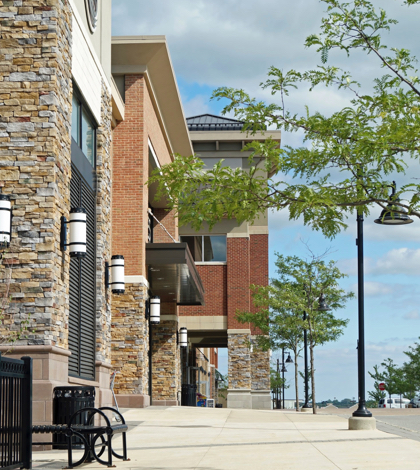Not in the Inland Empire, where brick and mortar has made a strong showing this year. The question is, how long can that trend last?
Traditional retail might be going away in a lot of U.S markets, as more people shop online, but it’s performing just fine in the Inland Empire.
Nearly half a million square feet of retail space was leased in Riverside and San Bernardino counties during the first nine months of this year, according to data released this week by CBRE Group Inc.
Supermarket chains – notably Aldi and Sprouts, which opened several stores in the Inland region during the past year – accounted for about one-fourth of that retail leasing.
Discount retail chains have leased about 100,000 square feet of space in the Inland Empire so far this year, while small medical tenants “also took a significant portion of retail space,” according to CBRE’s report.
Despite being slightly more expensive, leasing in community shopping centers totaled 242,519 square feet. Big-box space – defined in retail as 20,000 square feet or more – saw its vacancy rate drop to just below eight percent this year, the first drop in that category in years, CBRE reported.
Those are good numbers for an economic sector that is supposedly in a slump, and it contradicts the familiar media storyline that brick-and-mortar retail is on the way out, a narrative that gained traction when Toys R Us filed bankruptcy last month.
The chain, one of the largest toy retailers in the United States, has been foundering since a leveraged buyout in 2005 left the company with a debt of more than $5 billion, which its has never been able pay off. The New Jersey-based chain, besides being slow to adapt to Amazon and other online retail competitors, is also battling Target and Walmart, its two main competitors in traditional retail.
But Toys R Us not only didn’t close stores, it announced it will hire approximately 13,000 temporary workers during the upcoming holiday season. That’s among the largest call for extra seasonal employees issued by any major U.S. retailer so far this year.
There are other reasons to believe that e-commerce might not be a mortal threat to traditional retail, at least for now.
E-commerce sales account for only nine percent of total U.S. retail sales, and half of that comes from online orders placed in traditional retail stores, according to CBRE.
Certainly the Inland Empire has benefitted enormously from e-commerce. Amazon, the online retail giant, has nine fulfillment centers in the Inland region, including three in San Bernardino and two in Eastvale.
But the region is still an attractive market for brick-and-mortar retail, said Brian McDonald, first vice president and a retail specialist with CBRE.
“I wasn’t surprised when I saw those numbers,” said McDonald, who helped put together the report. “Retail in the Inland Empire is in an excellent position to grow, more than other markets, for a lot of reasons.”
Chief among those are affordable land and a growing population. As retail properties in Los Angeles and Orange County become more expensive, and more difficult to find, retailers will inevitably look to Riverside and San Bernardino counties for property, McDonald said.
That move is made even more attractive by the Inland Empire’s growing population, which skews young and has some disposable income to spend.
“When they can’t get land [in Los Angeles and Orange County] they start looking to neighboring counties, starting with the Inland Empire,” McDonald said, describing a market dynamic similar to what has happened in the housing market during the past 20 years or so. “The trend started when the recession ended, and it’s still going.”
The need for more multifamily housing in Los Angles and Orange County is also helping to drive some retailers out of those markets and, in some instances, into the Inland Empire, McDonald said.
Some former retail sites in those markets that cover roughly 100,000 square feet – a former Kmart or Sears, for example – are converted to apartments.
“That doesn’t happen in most markets, but it’s happening in those two,” McDonald said. “The need for multifamily is so great that there’s pressure to rezone those properties. The result is retailers that are looking for a property that size go looking in other markets.”
Five hundred thousand square feet of leased retail space would be impressive in almost any market, said Rick Lazar, senior vice president with Coldwell Banker Commercial Real Estate’s Redlands office.
“I’m really blown away by that number,” Lazar said. “Retail isn’t my specialty, but you don’t have to look around much to see that there is a lot of retail development in some parts of the Inland Empire. It shows that people still want to go out and shop and interact, that it’s not just about having things delivered to the front door.”
The bigger question is how long the trend can continue, said Nelson Wheeler, a partner with Strategic Retail Advisors, a consulting firm in Newport Beach.
“It’s not sustainable at the present rate for more than a year,” Wheeler said.
 IE Business Daily Business news for the Inland Empire.
IE Business Daily Business news for the Inland Empire.


